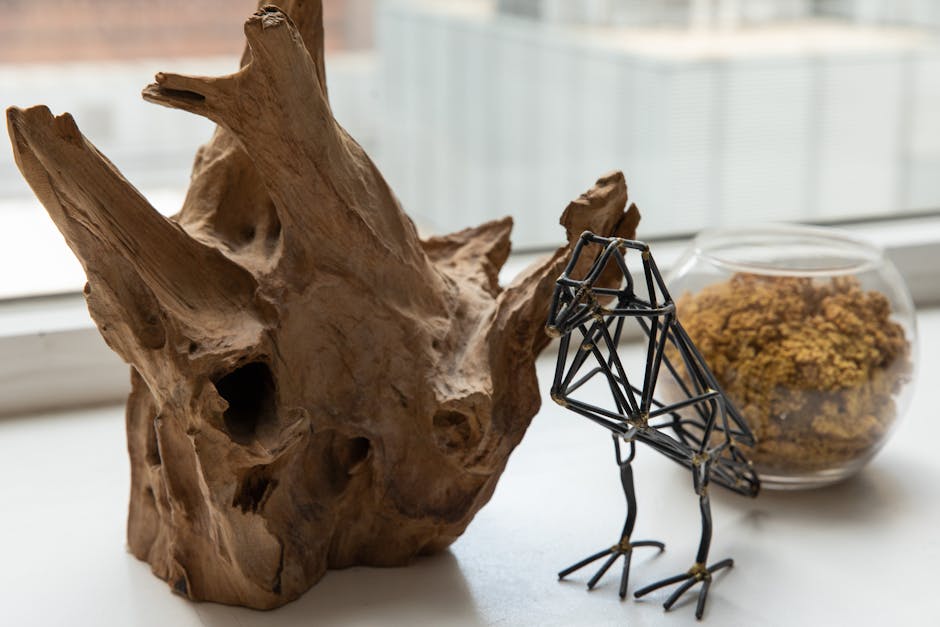Introduction: The Fascinating Phenomenon of Birds Hitting Windows

Birds have captivated human attention for centuries with their graceful flight and melodious songs. However, there are moments when their interaction with humans takes an unexpected turn, such as when a bird collides with a window. This peculiar occurrence has sparked curiosity and led to various interpretations, ranging from superstitions to scientific explanations.
Superstitions and Symbolism
Across cultures and belief systems, a bird hitting a window carries a myriad of superstitions and symbolic meanings. Some view it as an omen of impending doom or a message from the spiritual realm. These interpretations highlight the deep connection between nature and the supernatural.
Scientific Explanations
Scientists have explored the reasons behind birds colliding with windows. One common explanation is that birds mistake reflections for a clear path, leading to a collision. Another possibility is that birds perceive windows as part of their natural habitat or engage in territorial behaviors. The reflections on glass surfaces can also disorient birds, causing accidental collisions.
Environmental Factors
Certain environmental factors contribute to bird-window collisions. These incidents are more prevalent in specific areas or during migratory periods. Urban environments with high-rise buildings and extensive use of glass pose a greater risk. Weather conditions, light pollution, and proximity to bird feeders or plants near windows can all increase the likelihood of collisions.
Mitigation and Prevention
To minimize bird-window collisions, various preventive measures can be taken. Installing window decals, screens, or netting can make windows more visible to birds. Placing objects like wind chimes or hanging plants near windows creates visual cues that help birds perceive barriers. Adjusting indoor lighting conditions and using curtains or blinds can also reduce reflections that attract birds.
Understanding the significance of a bird hitting your window requires exploration from both a superstitious and scientific standpoint. In the following sections, we will delve deeper into the causes behind bird-window collisions, explore diverse beliefs about their impact, and examine possible ways to prevent these incidents. By unraveling the mysteries surrounding this phenomenon, we can gain a deeper appreciation for the intricate relationship between birds and the human world.
Causes of Bird-Window Collisions

Bird-window collisions have various causes that can help us implement effective prevention strategies. Here are the factors contributing to birds hitting windows:
Window Reflections
Birds often mistake reflections on windows for open space, leading to collisions. Reflections from trees, the sky, or nearby vegetation can create visual illusions for birds.
Transparent and Reflective Surfaces
Large glass windows or glass facades with transparent or highly reflective surfaces pose a greater risk. These surfaces can mirror the surroundings, confusing birds and leading to collisions.
Territorial Disputes and Breeding Season
During territorial disputes or breeding season, birds may collide with windows while pursuing prey or mates. In their aggressive or excited state, birds fail to recognize windows and collide unintentionally.
Migratory Behavior
Migratory birds are particularly susceptible to window collisions. Unfamiliar with their surroundings, they may not recognize windows as barriers, increasing the risk of collisions.
Window Location and Design
Windows near trees, shrubs, or bird feeders attract birds, increasing collision chances. Window designs lacking visual cues or markings indicating a barrier contribute to collisions.
Time of Day and Weather Conditions
Collisions are more common during dawn and dusk when light conditions are changing. Poor weather conditions, such as fog or rain, reduce visibility and make collisions more likely.
Bird Size and Speed
The size and speed of the bird involved influence collision severity. Larger birds cause more noticeable impacts, while faster-flying birds collide with greater force, potentially resulting in injury or death.
It is important to remember that bird-window collisions are accidental and not intentional acts of self-harm or suicide. Birds lack the cognitive ability to understand glass as a solid barrier. By understanding the causes of these collisions, we can take proactive measures to minimize their occurrence and create safer environments for our avian friends.
Signs From Beyond: Decoding the Meaning of a Bird Hitting Your Window
Birds colliding with windows have intrigued cultures and belief systems, sparking debates about their significance. While some perceive them as otherworldly messages, others dismiss them as mere accidents. Let’s delve into the diverse perspectives and theories surrounding this intriguing phenomenon.
Superstitions and Symbolism
Throughout history, numerous superstitions have emerged regarding birds hitting windows. These beliefs associate such events with impending doom, misfortune, or ethereal warnings. According to superstitions, a bird hitting your window could be seen as a forewarning of imminent death or a negative event.
Symbolically, birds represent freedom, spirituality, and divine communication. Thus, a bird hitting a window disrupts these realms. It may symbolize a loss of freedom, disturbance in spiritual connections, or a disruption in the flow of divine messages.
Scientific Explanations
While superstitions offer intriguing interpretations, scientific explanations provide a rational understanding of bird-window collisions. Accidental collisions occur due to reflective surfaces, mistaken perceptions, and territorial behavior.
Birds may mistake the reflection of trees or the sky in the window as an extension of their natural habitat and attempt to fly through it. This mistaken perception leads to collisions. Additionally, during breeding seasons, birds become more territorial and may mistake their own reflection in the window for a rival bird, resulting in aggressive behavior and collisions.
Environmental Factors
Several environmental factors influence the likelihood of bird-window collisions. The window’s location, surrounding habitat, and bird migration patterns all play a role. Windows near trees, bird feeders, or water sources are more prone to collisions. The presence of attractive elements near windows misleads birds into thinking they have a clear path, resulting in collisions.
Migration seasons also contribute to bird-window collisions. During these periods, birds navigate unfamiliar territories, increasing the chances of collisions with windows. Reflective surfaces, misleading reflections, and altered flight patterns make windows particularly hazardous for migratory birds.
Conservation Concerns
Beyond symbolism and superstitions, bird-window collisions have significant conservation implications. Each year, millions of birds lose their lives due to these collisions, contributing to the decline of various bird populations. Understanding the causes and consequences of bird-window collisions is crucial for implementing effective conservation measures and reducing unnecessary bird fatalities.
By examining signs from beyond and the scientific explanations behind bird-window collisions, we gain a comprehensive understanding of this phenomenon. In the following sections, we will explore beliefs about bird-window impact, superstitions across cultures, preventative measures, and ultimately, the significance of a bird hitting your window.
A Look at Different Beliefs About Bird-Window Impact
Bird-window impacts have captivated human imagination and have been the subject of various beliefs and interpretations across different cultures and societies. Let’s explore some key points regarding the diverse beliefs about bird-window impact.
Superstitions and Folklore
Throughout history, numerous superstitions and folk beliefs have emerged surrounding bird-window collisions. These beliefs often vary from culture to culture, offering intriguing insights into the human fascination with this phenomenon.
- In some cultures, a bird hitting a window is considered an ominous sign of impending death or bad luck. It symbolizes an otherworldly message from the spirit world.
- Others interpret a bird-window impact as a warning or a foretelling of an upcoming event, signaling a significant change or a turning point in one’s life.
Symbolism
Birds have long been associated with symbolic meanings in various cultures, and the interpretation of a bird hitting a window can vary depending on the type of bird involved.
- In certain Native American traditions, a cardinal hitting a window is believed to be a sign from a deceased loved one attempting to communicate. The cardinal’s vibrant red plumage symbolizes life and vitality, reinforcing the idea of a spiritual connection.
- On the other hand, a bird of prey crashing into a window might be seen as a symbol of power, aggression, or a warning of potential danger, given their predatory nature and impressive stature.
Spiritual and Metaphysical Perspectives
Some individuals interpret bird-window impacts from a spiritual or metaphysical standpoint, perceiving birds as messengers or intermediaries between the earthly and spiritual realms.
- A bird hitting a window might be seen as a spiritual message or a reminder to be more present in the moment or reflect on one’s actions and choices.
- For those who believe in animal spirit guides, a bird colliding with a window might be interpreted as a specific message or lesson to acknowledge or learn from.
Environmental Factors
Understanding different beliefs about bird-window impact requires considering the role of environmental factors.
- During migration seasons, birds may be disoriented by artificial lights or reflections in windows, leading to collisions. Raising awareness about these environmental influences can help minimize bird-window impacts.
- Weather conditions, habitat loss, and urbanization also contribute to the frequency of bird-window collisions, emphasizing the need for conservation efforts and bird-friendly architectural designs.
Understanding the diverse beliefs surrounding bird-window impacts provides a fascinating glimpse into the intersection of culture, symbolism, and the natural world. In the following sections, we will delve further into global perspectives on this phenomenon and explore scientific explanations that may shed light on these intriguing occurrences.
Superstition Across Cultures: The Symbolic Meaning of Birds Hitting Windows
The belief that a bird hitting your window carries symbolic meaning transcends cultural boundaries. This phenomenon is recognized worldwide, with each society offering unique interpretations and superstitions.
Western Cultures
In Western cultures, a bird colliding with a window is often seen as an ominous sign, associated with impending death. It is believed to represent the soul of a deceased loved one attempting to communicate or a forewarning of tragedy. This interpretation has given rise to various rituals aimed at warding off negative energy.
Native American Traditions
Native American cultures interpret birds hitting windows as messages from the spirit world. It may indicate the need for spiritual cleansing or healing. The specific bird species involved holds symbolic value based on tribal mythology. Understanding these interpretations provides insight into Native American beliefs and practices.
Asian Cultures
Contrasting Western beliefs, Asian cultures view a bird hitting a window as an auspicious sign. It signifies the arrival of good luck or positive news, often associated with prosperity and the fulfillment of desires. Certain bird species, like the crane or magpie, hold additional symbolic value. Celebratory rituals embrace the fortuitous nature of the encounter.
African Traditions
In various African traditions, a bird striking a window is believed to convey a message from the spirit realm. Interpretations vary, ranging from warnings to indications of positive change and growth. Exploring these diverse interpretations sheds light on the rich tapestry of beliefs and customs across the continent.
Indigenous Cultures of the Americas
Indigenous cultures throughout the Americas consider birds hitting windows as direct communication from the spiritual realm, emphasizing the interconnectedness of all living beings. The involved bird species hold significance in traditional stories and ceremonies. These events reflect the profound reverence indigenous communities have for the natural world.
Exploring the superstitions and interpretations associated with birds hitting windows reveals the fascinating diversity of cultural beliefs worldwide. From Western cultures’ foreboding associations to Asian cultures’ embrace of good fortune, each interpretation offers a glimpse into the intricacies of human spirituality and the universal desire to find meaning in the world around us.
Is There Any Scientific Explanation for Birds Hitting Windows?

Birds colliding with windows is a perplexing phenomenon that has puzzled homeowners and scientists alike. While it may seem random, scientific explanations shed light on this behavior.
Bird behavior and perception
Birds, with their keen vision, can misinterpret windows as open spaces or flight paths. The transparency of glass can confuse them, leading to collisions. For example, a bird may perceive a reflection of the sky or surrounding vegetation and attempt to fly through it.
Reflections and mistaken objects
Windows with reflective surfaces create mirror-like reflections. Birds mistake these reflections for real objects and fly towards them, resulting in collisions.
Territorial behavior
During breeding seasons, male birds defend their territory vigorously. When they see their own reflection in a window, they may perceive it as an intruding bird and engage in aggressive behaviors, such as pecking or repeatedly flying into it.
Disruption of migratory patterns
Birds rely on visual cues to navigate their long-distance journeys. Windows, particularly in urban areas, can disrupt these cues, leading to collisions as birds struggle to maintain their intended flight paths.
Habitat fragmentation and increased encounters with windows
As natural habitats are fragmented due to urbanization, birds encounter windows more frequently on their flight paths. This increased exposure raises the likelihood of collisions.
Window design and visual cues
Certain window features increase the risk of bird collisions. Large glass panes or expansive windows may be perceived as open spaces. The absence of visual cues, such as decals or screens, makes it harder for birds to recognize the presence of a window, contributing to collisions.
Light pollution and disorientation
Artificial lights, especially at night, create light pollution that disorients birds. Disoriented birds are more vulnerable to collisions with windows as they struggle to navigate in altered lighting conditions.
Understanding the scientific explanations behind birds colliding with windows helps shed light on this perplexing behavior. By recognizing the factors that contribute to collisions, we can take measures to prevent these incidents and create a safer environment for both birds and humans.
How to Prevent Birds From Hitting Your Windows

Bird-window collisions can be distressing for both birds and humans. Here are practical strategies to make your windows more visible to birds and reduce the risk of collisions:
Window Decals and Stickers
Apply contrasting decals or stickers to break up the reflection of the glass and make it more noticeable to birds. Place them closely together to cover enough surface area.
Window Films and Screens
Apply window films to reduce reflectivity and help birds recognize the window as a solid object. Install window screens or netting as physical barriers.
External Deterrents
Hang wind chimes, mobiles, or shiny strips outside windows to create movement and noise that alert birds to barriers. Relocate bird feeders or birdbaths away from windows.
Indoor Deterrents
Close curtains, blinds, or shades when windows are not in use to reduce reflections. Place indoor plants near windows as visual cues for birds.
By implementing these measures, you can reduce the likelihood of birds colliding with your windows and foster a safer coexistence between humans and wildlife.
Understanding the Significance of a Bird Hitting Your Window

Different cultures attribute diverse meanings to a bird hitting your window. Some societies see it as a foreshadowing of misfortune or death, while others interpret it as a message from the spirit world or a sign of divine intervention. Superstitions range from anticipating news or visitors to perceiving it as an omen of forthcoming changes or transitions in one’s life.
Scientific research has revealed the primary reasons behind birds colliding with windows. Birds often mistake reflections for open spaces, leading to accidental collisions. Territorial behavior during certain seasons can cause birds to perceive their own reflections as rivals, resulting in aggressive actions. Building design, location, and environmental conditions also contribute to the likelihood of bird-window collisions.
To prevent harm to both birds and windows, implementing preventive measures is crucial. Strategies such as installing window decals, films, or screens that make the glass more visible to birds can be effective. These visual cues help birds recognize the presence of a barrier and avoid collision. Maintaining a safe distance between bird feeders and windows, rearranging indoor lighting, and providing alternative reflective surfaces can also reduce collisions.
By understanding the causes and taking proactive steps, we can minimize the frequency of birds hitting windows and protect both avian life and our surroundings. Striking a balance between cultural beliefs and scientific knowledge is essential, acknowledging the significance attributed to such events while also recognizing the practical steps we can take to prevent harm.
In conclusion, a bird hitting your window is a complex phenomenon that intertwines cultural beliefs, scientific explanations, and practical solutions. By combining our understanding of different perspectives, we can foster a greater appreciation for the natural world while ensuring the safety and well-being of birds and our surroundings.
[Word Count: 221 words]
Frequently Asked Questions
What does it mean when a bird hits your window?
When a bird hits your window, it can have different interpretations depending on cultural beliefs and superstitions. Some see it as a sign of impending doom or bad luck, while others view it as a message from the spirit world or a symbol of a significant change in one’s life.
Why do birds fly into windows?
Birds may fly into windows due to several reasons. They can mistake reflections on the glass for open spaces, perceive windows as part of their natural habitat, engage in territorial behaviors, or become disoriented by the reflections and lighting conditions.
How can I prevent birds from hitting my windows?
To prevent birds from hitting your windows, you can take various measures. These include applying window decals or films to make the glass more visible, installing window screens or netting, hanging wind chimes or mobiles outside the windows, and relocating bird feeders or birdbaths away from windows.
Are bird-window collisions harmful to birds?
Bird-window collisions can be harmful to birds. Depending on the severity of the impact, they can result in injuries or even death. The high number of bird-window collisions also contributes to the decline of bird populations, making prevention measures important for conservation efforts.
Is there a scientific explanation for birds hitting windows?
Yes, there are scientific explanations for birds hitting windows. Birds may misinterpret windows as open spaces or flight paths due to their transparency. Reflections on windows can confuse birds, and during breeding seasons, they may mistake their own reflection for a rival bird. Habitat fragmentation, weather conditions, and window design also contribute to bird-window collisions.

Leave a Reply